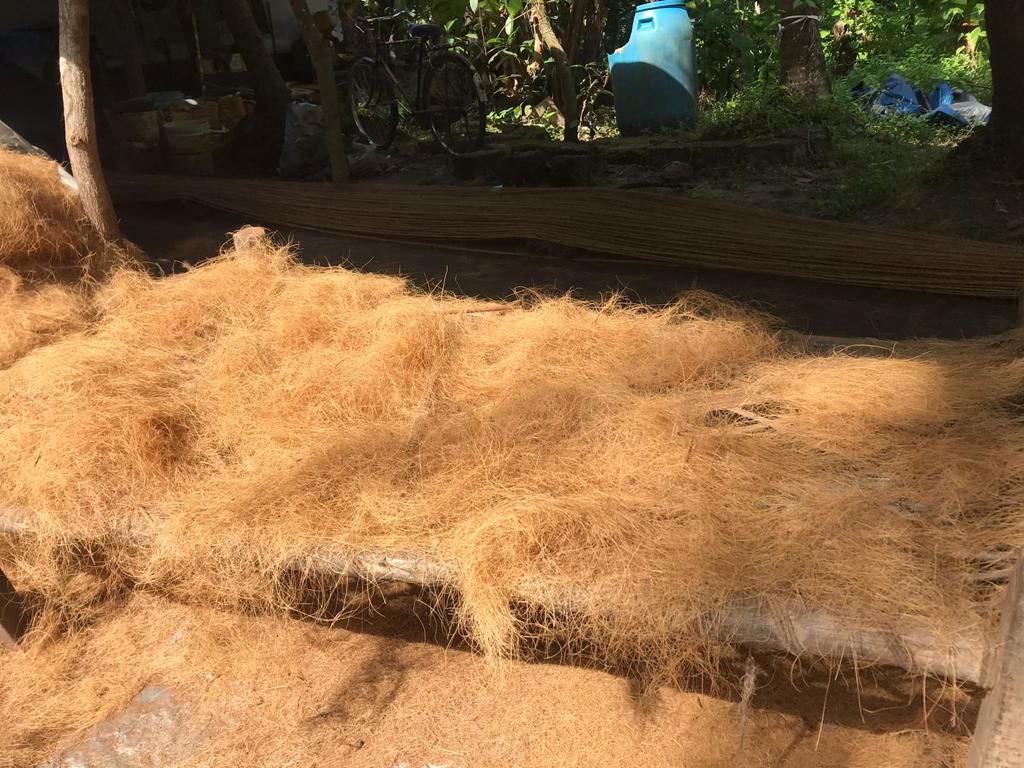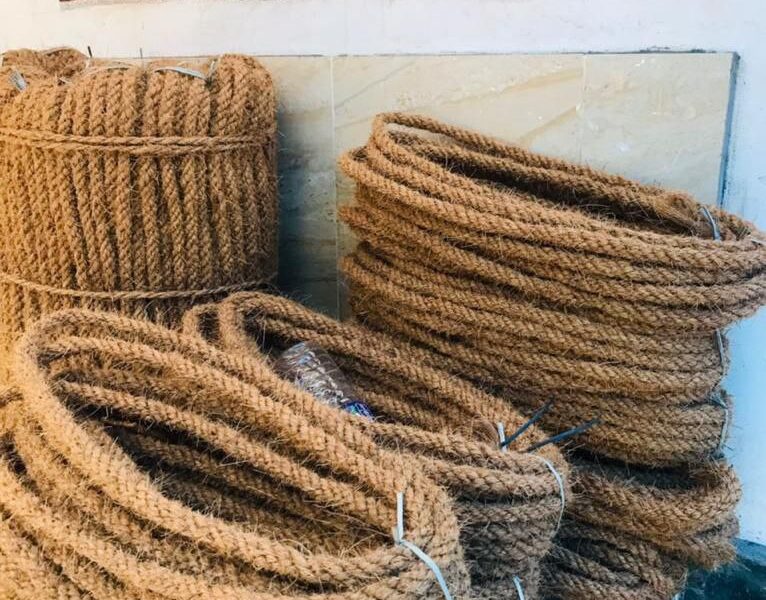Coconut fibre ropes made from natural coconut, completely untreated, are durable and fibrous. North Malabar is famous for its coir-making skills, passed down to them from generation to generation.
However, the community’s women are usually primarily involved in coir rope making. They use different parts of the plentiful coconut palm to produce the coir.
Coir gets its name from the Malayalam word ‘kayar,’ meaning rope. Coir, otherwise known as coconut fibre, is the fibrous stuff found between the hard shell and the outer coat of a coconut. Fibre is extracted from the husk of ripe or unripe coconuts and used to make various products like brushes, floor mats, mattresses, doormats, and rope for use in boat and house construction.
Coir is the only natural fibre that is highly resistant to abrasion and resistant to salt water. Harvesting usually takes a 45-60 day cycle. Mature coconuts are husked as soon as possible, whereas unripe coconuts are spread in a single layer on the ground to be seasoned for a month. Later the fruit is separated from the seed by splitting the husk and peeling the pulp layer off.

Retting is the next process which is a curing process in which the husks of the coconuts are in a microbe-encouraging environment. This helps partially decompose the husk’s pulp, making it easy to be separated into coir fibres and leaves a residue called the coir pith. This process can take 8 – 10 months, depending on the water – fresh or salty.

The retted pulp is beaten with wooden mallets to separate the fibres from the pith and the outer skin. This separation is completed by washing the leftover from the de-fibering process and combing it with hand or tumbling it in a perforated drum. The clean fibres are then spread lavishly on the ground to dry in the sun. Coir has myriad uses, from bedding to flooring, packaging, and rope manufacturing.
At Poothali, we offer you the experience of understanding this process. Visit Poothali and we will take you around to show.
